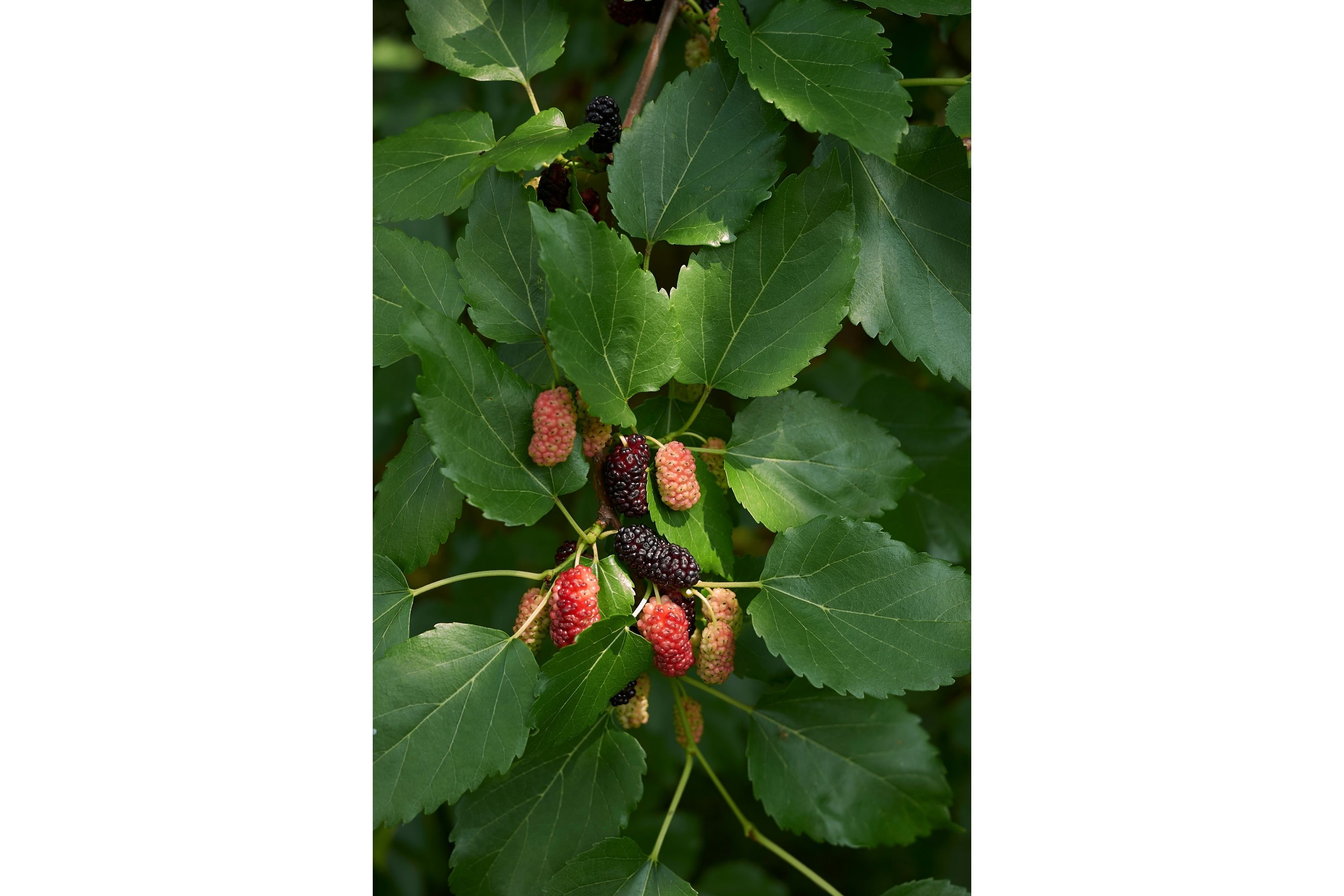Indian white mulberry
(Morus alba indica)

Description
Morus alba indica, commonly known as Indian white mulberry or simply Indian mulberry, is a species of flowering plant in the family Moraceae. It is native to the Indian subcontinent and Southeast Asia, where it is widely cultivated for its edible fruits and as a shade tree. Taxonomy and Nomenclature Morus alba indica belongs to the Moraceae family, which also includes other popular fruit trees such as figs and jackfruits. The genus Morus consists of about 10 species of deciduous trees, which are native to temperate and subtropical regions of Asia, Europe, and North America. The species name "alba" means "white" in Latin, which refers to the color of the mulberry's fruit. Description Indian white mulberry is a small to medium-sized deciduous tree that can reach up to 20 meters in height. Its trunk is short and stout, with a rough bark that is grayish-brown in color. The tree's leaves are alternate, simple, and heart-shaped, with serrated margins. They are about 10-20 cm long and 8-15 cm wide, and have a glossy green upper surface and a dull green lower surface. The leaves are arranged in a spiral pattern around the stem, which gives the tree a distinctive appearance. The tree produces small, greenish-yellow flowers that are clustered together in cylindrical inflorescences called catkins. The flowers are dioecious, meaning that they are either male or female, and are pollinated by wind. The female flowers develop into small, succulent fruits that are about 2-3 cm long and 1-2 cm wide. The fruits are white when ripe, and have a sweet and mildly tart flavor. They are rich in vitamin C, iron, and potassium, and are commonly used to make jams, jellies, and pies. Cultivation and Uses Indian white mulberry is a hardy and fast-growing tree that can thrive in a wide range of soils, including sandy, loamy, and clayey soils. It prefers full sun to partial shade, and requires moderate watering during the growing season. The tree is propagated by seeds, cuttings, or grafting. The tree has many uses besides its edible fruit. Its leaves are used as a natural fodder for silkworms, which are the primary source of silk production. The tree's wood is also used for making furniture, tools, and musical instruments. In traditional medicine, the tree's bark, leaves, and fruit have been used to treat various ailments, such as fever, cough, and inflammation. Cultivars and Varieties There are several cultivars and varieties of Indian white mulberry that have been developed for their unique characteristics. Some of the most popular ones include: 'Champagne': This cultivar produces large, sweet, and juicy fruits that are yellow when ripe. 'Shatoot': This variety is a dwarf form of Indian white mulberry that is grown as an ornamental tree. It produces small, white fruits that are prized for their delicate flavor. 'Pakistan': This cultivar is native to Pakistan and produces large, sweet, and juicy fruits that are highly valued in the local market. Pests and Diseases Indian white mulberry is relatively resistant to pests and diseases. However, it may be affected by some common problems, such as: Leaf spot: This fungal disease causes brown spots on the leaves, which can lead to defoliation if left untreated. Powdery mildew: This fungal disease appears as a white powdery coating on the leaves, and can reduce the tree's vigor and fruit production. Scale insects: These small insects suck the sap from
Taxonomic tree:







